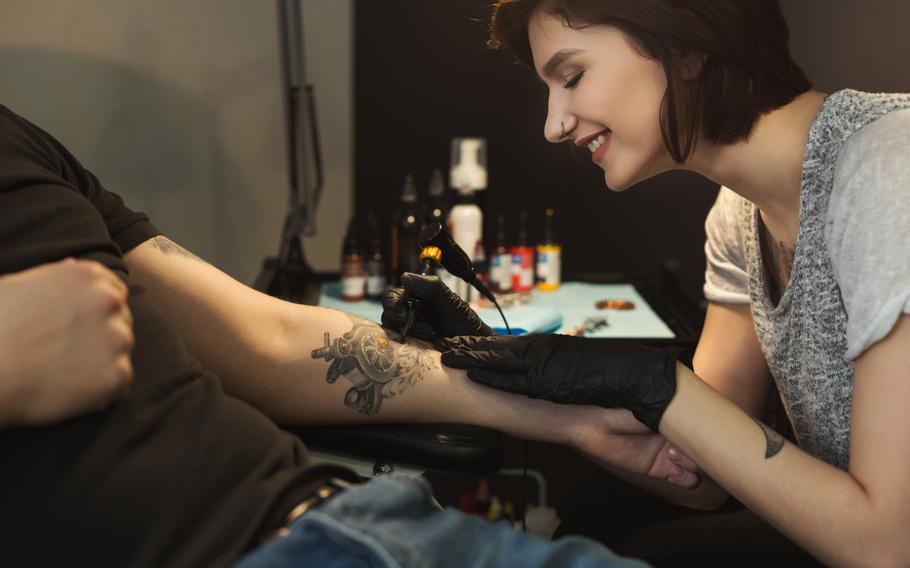Lifestyle
Try on these tattoo styles
Stars and Stripes October 15, 2024

Getting a tattoo (milkos (123RF))
Tattoos used fall into one of two categories: color or black and white. As more inks, machines and techniques became available, tattoo artwork expanded. Today, there are countless styles. Here are some modern and unique styles that have emerged over the years.
Trash Polka®
As we are stationed in Europe, it makes sense to highlight a style that was created here. Trash Polka is a brand and tattoo style created in the late 1990s by Volker Merschky and Simone Pfaff in Germany. This style uses a blend of black ink with splashes of red and combines surrealism and naturalism in art.
Japanese Irezumi
Some say that Irezumi dates back almost 10,000 years. Using an array of colors, Irezumi tattoos tell stories from Japanese history and feature waves, dragons, warriors, “kirins” and smokey patterns. Today, there is a controversial association since members of the Yakuza have Irezumi tattoos. However, as more young people get these tattoos, and as time goes on, the association with criminality has lessened.
Cybersigilism
These tattoos look very similar to the tribal tattoos that donned many biceps in the 1990s and early 2000s. However, these tattoos with their mix of thin lines and sharp angles are a more recent emergence on men and women all over the body. The style emerged before the name, which was given to it by tattoo artist, Noel Garcia.
Geometrical
These tattoos can be traced back to ancient Greeks, Mayans or Egyptians. They are known for their geometric shapes and symmetry. There are also different meanings behind the various shapes: Circles represent wholeness and unity while triangles and hexagons represent balance and harmony.
Patchwork or Embroidery
These are some of the newest tattoos to appear on the scene with reports of them first being seen in Latin America in 2017. The tattooing technique creates the visual effect that the artwork has been embroidered onto the skin.
Kawaii
Kawaii isn’t just a tattoo style, but an entire culture in Japan that was popularized in the 1970s due to the creation of the Hello Kitty brand. Kawaii is all about cute, cuddly, bright and sparkly. Think fuzzy animals, cartoons, sparkles and hearts. In kanji, Kawaii translates to “able to be loved, can or may love, lovable.”
Biomechanical
Biomechanical tattoos date back to the late 1970s and early 1980s in part because of Swiss artist H.R. Giger’s artwork. Biomechanical tattoos create the illusion that mechanical parts are a part of the human body, no matter where on the skin the tattoo is located. Skin that appears to tear and reveal mechanical parts underneath are a popular choice for this style.
Negative Space Tattoos
This style encompasses a variety of styles including Polynesian, minimalistic, geometric and Celtic and its origins date back hundreds of years. This style is more about what isn’t inked on the skin rather than what is.
Watercolor
Watercolor tattoos date back to the 20th century but didn’t rise in popularity until the 1980s and 1990s. With brilliant color gradients to create the effect of watercolor paintings, these pieces are often bold and unique. Some designs use black lines to create the primary image and use the color as an afterthought or to create a splattering paint effect. Others may not use black ink at all and have the colors blend into each other for a more authentic feel.
Neo Traditional
Neo Traditional tattoo styles emerged in the 1970s and they twist Americana (American Traditional) artwork by using non-conventional colors and a mash-up of abstract and classical designs.
New School
There is debate in the tattoo community as to the origin of New School tattoos. Some say the 1970s; some say the 1990s. This style usually encompasses the exaggeration of features, vivid colors and pop culture figures.